Scaling up Conservation Agriculture
Farmers are practicing conservation agriculture on large-scale farms to improve soil fertility, increase yields, and boost profits.
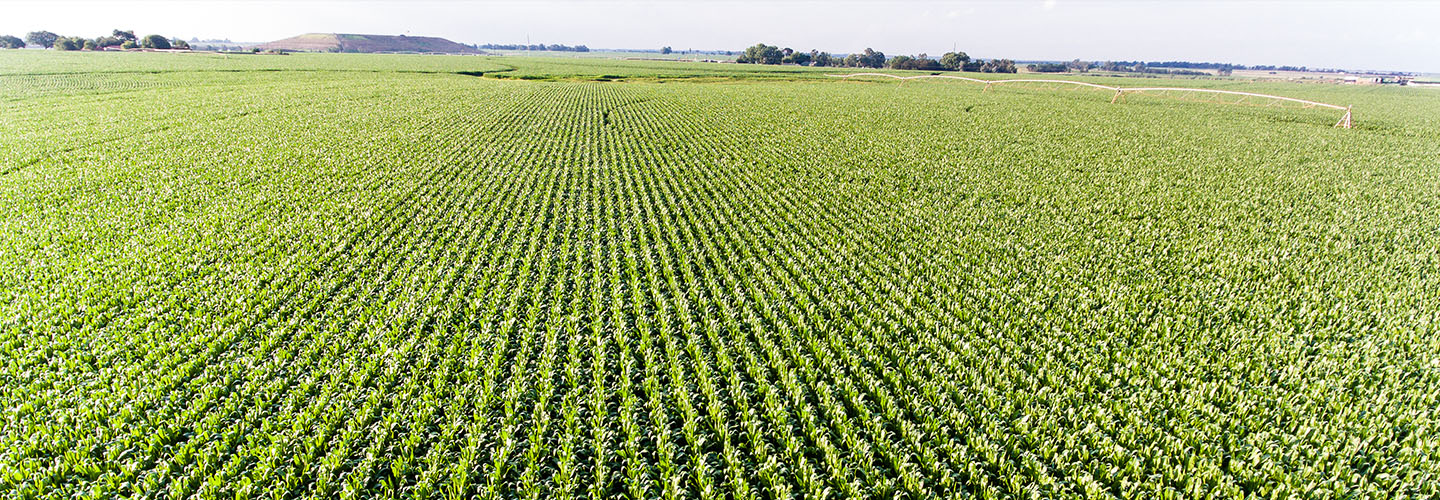
From U.S. 212, Cronin Farms’ cornfields in July look a lot like those throughout America’s Great Plains: a shimmering sea of green that stretches to the horizon.
Look closer, however, and you’ll see what sets these South Dakota fields apart. Vibrant stalks emerge from a carpet of dead vegetation that’s as thick as a doormat—the residue not just of the previous season’s cover crop, but of all the grains, legumes, vegetables, and grasses sown on that ground since 1993, when the 9,500-acre operation stopped tilling its soils and, in 2009, started diversifying its crops.
Today, with an annual cash crop—including corn, soybeans, wheat, sunflowers, field peas, millet, flax, and oats—in rotation with nine cover crops that serve as grazing and forage for 850 brood cows and their calves, Cronin Farms epitomizes conservation agriculture. It’s a self-replenishing, carbon-sequestering system of soil, crop, nutrient, weed, pest, and water management practices.
Yet with yields that consistently exceed the state average, despite a scant 18.5 inches of annual rainfall, and input costs that amount to as little as $6 for every $10 spent by other farmers, Cronin Farms has also achieved the holy grail of what the Food and Agriculture Organization (FAO) of the United Nations terms “sustainable production intensification”: farming that maintains or increases yields today without sacrificing future food-production capacity. “It’s unreal, how we’ve doubled or tripled our yields over the last 25 years,” says Dan Forgey, Cronin Farms’ agronomist since 1978. “And all we did was make this soil what it once was.”
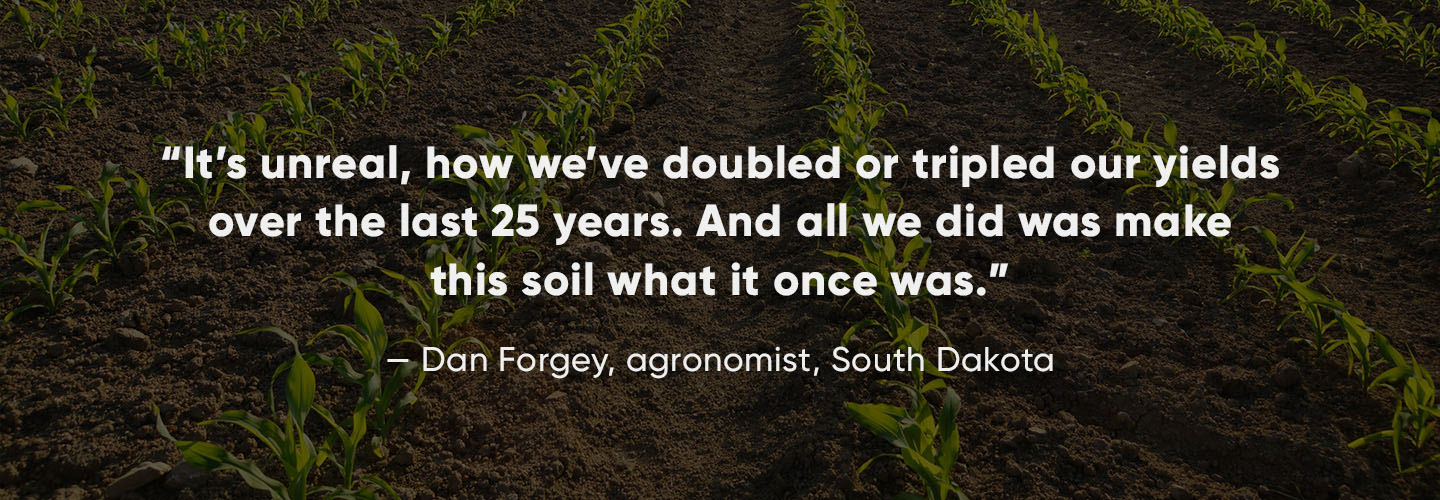
Sustainable production intensification, agronomists agree, is the only way we’re going to feed a global population that by 2050 could reach 9.6 billion. With arable land diminishing due to urbanization and resource depletion, increased production must come from the 38 percent of the world’s land surface currently under cultivation. That won’t be possible unless we practice conservation agriculture to restore carbon and nutrients to degraded soils, employ nitrogen management solutions that protect fresh water sources, and find alternatives to further drawing down depleted aquifers.
Yet few producers today implement at scale the combination of practices—soil conservation tillage (no disturbance or minimal disturbance of the soil), crop diversity, crop rotation, cover crops, double cropping, integration of livestock, and buffer habitats for “beneficials” such as pollinators and pest eaters—that have been proven to restore the environment and bolster production capacity. FAO estimates that a mere 11 percent of cropland worldwide is sustainably managed. In the U.S., the world’s largest exporter of food, only 21 percent of commodity-crop acreage is in continuous no-till or strip-till (exposing just a strip of soil for seeding) management.
To be sure, there is wide regional variability within the U.S. In the northern Great Plains, for example, where the Cronins farm, fully 49 percent of commodity crops—and 63 percent of wheat—are under no-till or strip-till cultivation. But this just begs the question: why isn’t conservation agriculture more widely practiced? Why is there still an adoption gap when, economically and environmentally, soil conservation and other sustainable farming practices are demonstrably a win-win at scale, compared to most monoculture farming?
The economic argument
To understand the persistence of industrial practices, we need only go to America’s heartland, where millions of acres are devoted to just two crops: corn and soybeans. Farmers large and small embrace these monocultures, although many have also adopted soil health practices such as no-till and cover-cropping.
Doug Gronau is one of them. He cultivates corn and beans on 1,200 acres in Denison, Iowa, rotating in cereal rye and oats as winter cover crops. He doesn’t till his soil—and hasn’t since 2006—in part because his acreage is in hill country, where one heavy rainstorm can strip literally four inches of soil off an inclined field. More importantly, by drilling his cash crops right into cover-crop residue, he finds that he can prevent erosion while improving the water-infiltration, moisture-retention, and nutrient-cycling properties of his soil, which means he’s applying less fertilizer and minimizing both the nitrogen runoff that can pollute fresh water and the nitrous oxide evaporation that contributes to global warming.
Gronau is astounded at the health of his soils, as measured by the wealth of organic matter and the rhizome bacteria that feed on it. “When I stopped tilling in 2006, soil tests showed my organic matter was at 2.3 percent,” he says. “Today, it’s around 4 percent. And on even my roughest ground, my Haney Test score [a gauge of soil health that includes measures of organic matter and microbial activity] was 17.5 percent. The dividing line for me was 13. I was shocked.” He’s seeing his yields increase, too, although he’s not sure whether to credit his soil practices, his genetically superior seed stock, or some combination of the two.
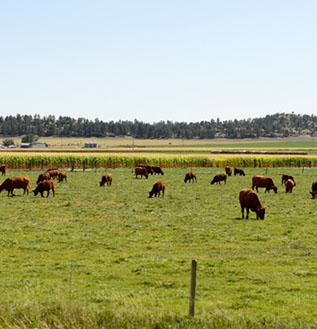
Yet when it comes to diversifying his cash crops to include, say, wheat, or expanding his cover-crop rotations to include small-grain, high-residue varieties such as barley, or to grazing cattle on his cover crops—practices that, in combination with no-till, are proven to reduce fertilizer, pesticide, and herbicide applications along with their toxic runoff—Gronau just isn’t inclined. “You know it’d be beneficial to the soil to do those things,” he says, “but if it’s not cost effective, it stops you.”
Part of it, he says, is his age. Near retirement, he doesn’t have the years left to reap the long-term benefits of, say, investing in a new grain bin to hold small-seed harvests, or bringing cattle in to graze his cover crops and deposit their manure and urea.
More critically, though, decades of corn and bean monocultures in Iowa have effectively eliminated the market for anything else. “If I grew wheat, I’d have to truck it to Omaha [Neb.] to sell it,” he says, “and that would eat up my margins.” Even if there were a market, he explains, with weather patterns increasingly unpredictable, it doesn’t make economic sense to plant weather-sensitive crops like wheat or to deviate from reliable, 200-bushel-per-acre crops like corn for variable, 100-bushel-per-acre crops like oats. “I’m just not going to take the risk,” he says. “Things are tight enough now—I can’t throw money around on seed or equipment.”
And that’s the vicious part of this cycle: despite record yields in America’s corn belt—Illinois produced a staggering 218 bushels per acre, on average, from 2015 to 2017—farmers there are seeing their profits dwindle. Global competition has softened commodity prices, which have trended downward since 2013; tariff hikes could further shave margins, as they’ve already done for U.S. soybean farmers. At the same time, farmers’ production costs have increased: since 2006, Illinois farmers have seen their combined fertilizer, seed, and pesticide costs jump 12 percent a year, peaking at $373 per acre in 2013. The result? Once overhead costs are factored in, many commodity farmers are barely breaking even. In 2016, corn producers in the northern Great Plains suffered a net loss of $4 an acre on corn, and $94 on wheat. So like Gronau, they are understandably averse to introducing further risk by adopting practices that take money and know-how to implement and upwards of five years to pay dividends.
Compounding the problem is that most of the U.S.’s prime farmland is leased—and farmers simply aren’t inclined to invest in the production capacity of land they don’t own or won’t occupy for long. Leases typically run one to three years, too short a time to recoup the upfront seed and labor costs of planting cover crops or to tinker with rotations that could cut into cash-crop yields by crowding the planting window. Squeezed already by tightening margins, lessees can’t afford to deviate from practices they know will cover their rents and sustain their families, let alone grow their businesses. Nor are landlords inclined to encourage or subsidize that investment, since the vast majority of them—80 percent—are people who aren’t farmers themselves.
“If you really want to change the way farmers farm, it’s the landlords you’ve got to educate,” says Gronau, who feels fortunate that the acreage he leases is owned by conscientious, conservation-minded individuals. “Most landlords either don’t care, or don’t know enough to care, about the farming practices of their tenant. That’s a major hurdle to overcome.”
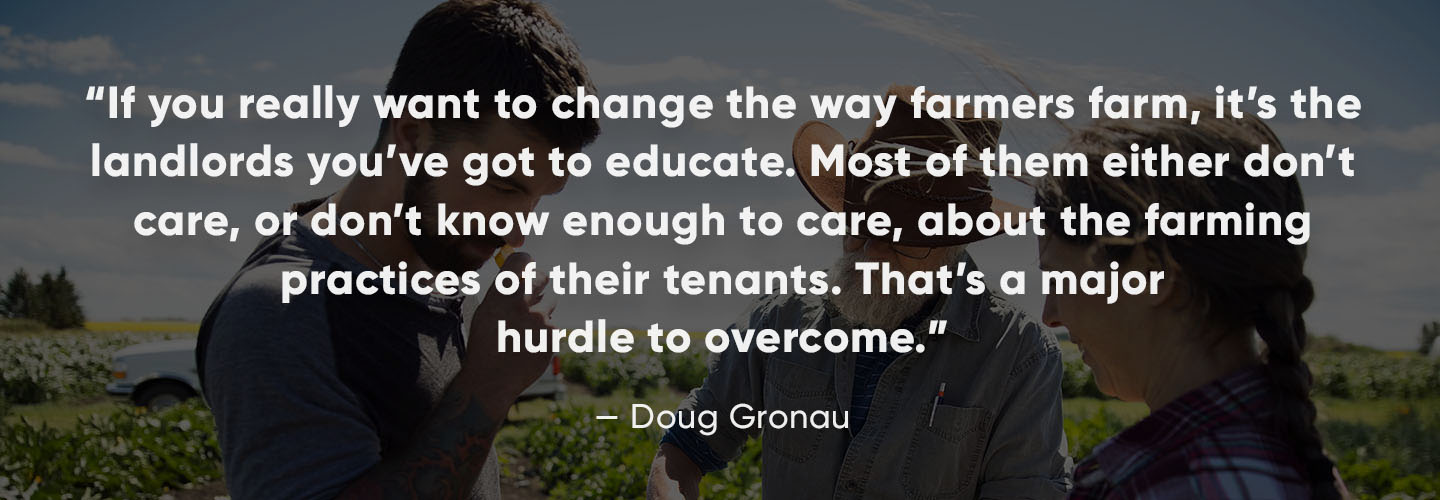
A global perspective
Profits dictate the farming practices of large-scale producers in other parts of the developed world, too. Except that elsewhere in the world, farmers turn to sustainable agriculture because, in the absence of government subsidies, it is the only way to sustain profits as well as yields. Those who have been practicing conservation agriculture for a while have turned a big enough profit, in fact, to secure future margins by investing in innovations like variable rate application (VRA) technology (delivering seeds, water, chemicals, and fertilizer based on data collected by sensors on GPS-mapped field zones) and seeds engineered for drought and salinity tolerance. In combination with polyculture and no-till practices, such innovations have already boosted yields while building future production capacity.
Nowhere is the virtuous cycle of practices more apparent than in South America, where, according to Global Farmer Network board member Roberto Peiretti, some 80 million hectares are farmed sustainably. A founding member of both AAPRESID (the Argentinian no-till farmers’ organization) and CAAPAS (American Confederation of No Till Farmers Associations), Peiretti helped lead the transition from soil-ravaging to soil-building practices across Argentina, Uruguay, Paraguay, and Brazil.
In the late 1970s, keen to apply what he’d learned in a master’s program at Oklahoma State University, he and close to 20 other like-minded farmers began experimenting with no-till and cover crops, pooling their knowledge to accelerate their collective learning curve. By the 1980s, they were working with equipment manufacturers to modify their planters so they could drill seeds into stubble without compromising germination rates. By the 1990s, they were double-cropping, getting two harvests out of the same land in the same growing season. As their efficiencies improved, so did their profits—and word spread.
From 3,000 hectares in the late 1970s, no-till farming in Argentina is today implemented on some 30 million out of 33 million hectares of cropland, according to Peiretti. Adoption rates in Uruguay and Paraguay are similarly around 90 percent, with Brazilian producers catching up quickly. Not all apply the systems approach that Peiretti practices on his family’s 8,000-hectare (19,800-acre) operation in central Argentina. But despite vast differences in climates, cultures, and histories, adoption has been swift because sustainability delivered crucial efficiencies. “It was all about how to survive, as farmers,” says Peiretti. “Along the way, we saw our soils improve. We realized many other benefits, social as well as environmental. But the main driver was economic. A government subsidy would have taken away that driver.”
Fellow Global Farmer Network board member Craige Mackenzie, a dairy farmer and specialty seed producer in Methven, New Zealand, couldn’t agree more. A beneficiary of federal subsidies at the outset of his career, Mackenzie was among thousands of farmers who saw their survival threatened when the New Zealand government yanked all financial support in 1984. But the absence of that safety net, while initially painful, spurred him to become “ruthlessly efficient.” Today he grows 13 crops, rotating them so that none of his land ever lies fallow. Profits realized from those crops enabled him to invest in soil and water mapping and monitoring equipment. Guided by GPS, his VRA technology ensures he applies only the seed, water, and fertilizer that any one of his 35 individual zones needs to be maximally productive. Saving 30 to 40 percent on water and nitrogen, in turn, has reduced labor and fuel costs. Mackenzie saw his investment deliver a 50 percent gain in profits between 2013 and 2016. “We got that massive leap in profitability because we understood what our land was producing,” he says. “The soil and yield mapping showed us the production variability: spatially, we were losing money. Once we figured out how to use that baseline data, it brought a lot of land into maximum production.”
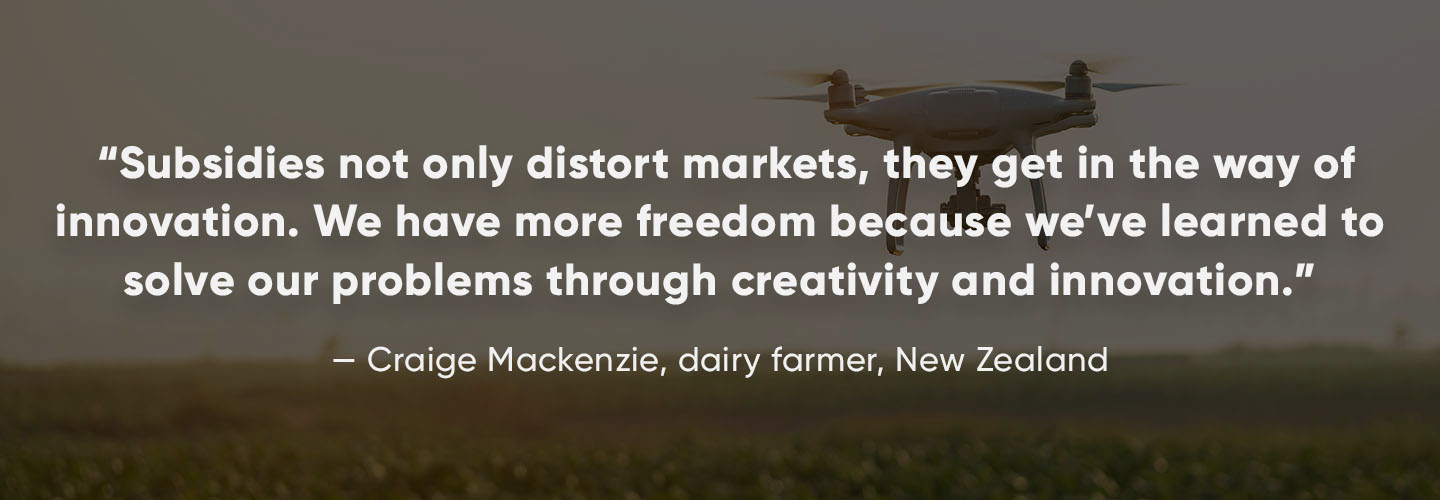
Sustainability, at scale
What these large-scale growers make clear is that, far from being a set of practices that make economic sense only for, say, organic growers who can count on a market premium, conservation agriculture confers resilience and competitive advantage. The problem, at least for U.S. farmers, is finding an economical way to transition to it.
Ryan Stockwell, director of sustainable agriculture for the National Wildlife Federation and a farmer himself, is sympathetic to monoculturists’ economic arguments. “These are challenging times in agriculture, and a lot of farmers are paralyzed by the pressures they’re facing,” he says. “Our infrastructure was designed around simplistic systems. We’ve failed as a government in representing our best interests, in not accounting for the long-term health of our soil or our people. It’s not an evil conspiracy, but rather, the way people make decisions, in free markets and democracies, that has gotten us here.”
To get to where we need to be, Stockwell says, the market needs to convey more clearly the signals that consumers send to producers. “Sustainability is far and away the top priority of millennials, and they’re going to be the consumers and decision-makers,” says Stockwell. Right now, he explains, the market signals the preference of millennials for organic produce, but effectively mutes the signal for sustainably produced grains because coarse grains are all commingled in vast bins, grain hoppers, and rail cars. “From that point on, the sustainably produced is indistinguishable from the industrially produced,” he says. “If we could figure out how to overcome that, the signal would get through to farmers and they’d be financially incentivized to change their ways.”
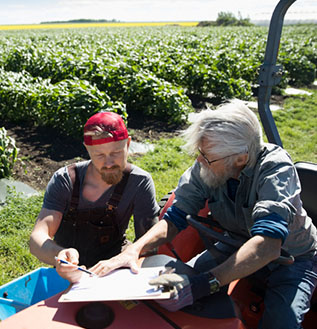
Similarly, the way crop insurance is structured diminishes farmers’ incentive to farm sustainably because it neither recognizes nor rewards them for reducing their risk profile by managing their resources more efficiently. “I can be managing my yield swings through good practices like rotation, cover crops, no-till, and crop diversity, so that even in a wet spring or long drought I can plant,” Stockwell explains. “But my neighbors’ practices limited their ability to plant in wet years, and they don’t take on that risk because the insurance system doesn’t reward them for doing so. And even though in difficult growing years I didn’t file claims and take money out of the system, my insurance cost goes up because my lower yield that year counts against my APH [actual production history] score. Whereas their rate doesn’t change because making a claim doesn’t count against their APH.” The signal doesn’t go through, in effect, because the safety net isn’t constructed to differentiate between risk management practices.
The most important adoption strategy, experts agree, is to ramp up the education and the support farmers need to weather the transition and accelerate their success. Jay Fuhrer, a soil health specialist with the USDA’s Natural Resources Conservation Service, believes that connecting farmers to each other can be catalytic, because “they’re as sensitive to social pressures,” he says, “as economic ones.” At a recent two-day soil health summit convened in Bismarck, N.D., 420 farmers showed up to listen to experts, share information, and form teams with other like-minded farmers to support each other as they set out to apply what they’d learned. “You could feel the excitement, the buzz in the air, of all these people intent on building soils,” says Fuhrer. “That’s the kind of connection we need, the excitement we need, to reverse the process. Our thinking has simplified with the landscape. When we get excited, our minds open up to the possibilities.”
Healthy soil, healthy crops
For all the distance we have to go, it’s important, says Fuhrer, to note how far we’ve come. “I’ve seen really good movement in the last ten years, compared to the last 20 I’ve been doing this,” he says. He points to organic farmers like Cody Straza and Allison Squires, millennials who cultivate 2,100 acres in Saskatchewan, Canada, and host groups of other farmers for a day or two of demonstrations on minimizing tillage, diversifying crops, rotating in cover crops, integrating cattle grazing, and encouraging pollinator species at their Upland Organics farm—practices they’ve experimented with that have demonstrably boosted yields despite 12–14 inches of rainfall annually.
Fuhrer is invited to show up at these informal gatherings and share the five principles of soil health. “I used to get strange looks, talking about the carbon cycle and nutrient density,” he says, “but there’s widespread acceptance of these terms now, because this generation understands them.” And what’s accelerated the lifting of general science awareness, Fuhrer believes, is social media. “Social norms can take time to change, but social media has already normalized the science.”
Stockwell, too, believes that if anyone can close the adoption gap in the U.S., it will be millennial farmers. “They’re educated, they’re open to innovation, and they’re more willing than previous generations to speak their values and walk their talk,” he observes. “They’re also the dominant consumers: it’s their generation who’ll be making purchasing decisions, and they want their values lived up to.
“If their signal can get through,” he adds, “then we just might turn this system around in time.”
Additional Links
In Pursuit of Sustainable Agriculture
The Importance of Agrobiodiversity Conservation